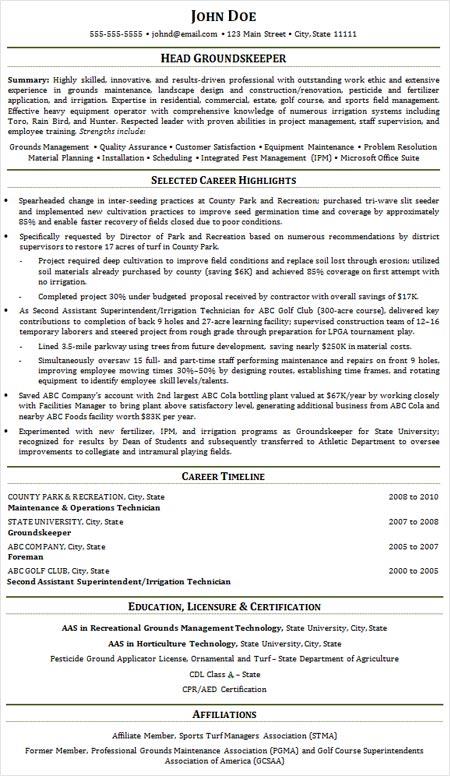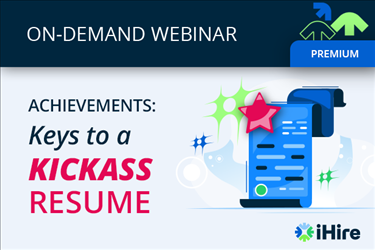- Job Seeker Resources
- |
- Last Updated: September 22, 2023

A Look at the 3 Top Resume Strategies
Rely on your objective and job history to help decide which resume strategy will work best for you.
For job seekers in need of resume writing assistance, there is a wealth of information available. A quick search brings up plenty of resume writing resources from all over the web including resume templates, free resume review tools, lists of power verbs and buzzwords to include, clichés to omit, common mistakes to avoid, and even what type of email address works best.
All of this information and guidance can become overwhelming, and it won’t do much good without a firm understanding of the basic strategies involved in resume writing and the type of organizational structure that would be most beneficial for your job search.
There are three resume formats used in modern resume writing:
- Chronological (also known as the traditional resume)
- Functional (sometimes referred to as the skills-based resume)
- Hybrid (identified in certain circles as the combination resume because it is a mash-up of the other two strategies)
These layouts highlight (or downplay) different aspects of a person’s career and can be most helpful when utilized in specific situations. The critical thing to keep in mind when writing your resume is that your objective should determine the strategy you employ, the type of resume format you choose, and the content your resume contains.
Video: How to Optimize Your Resume with iScore
Chronological
The most commonly used resume format (some say the best resume format), the chronological (or traditional) resume is a listing of an individual’s work history with detailed job descriptions and accomplishments for each previous position. Although it is called the chronological format, an individual’s employment history will actually be listed in reverse-chronological order when using this strategy beginning with the current or most recent position and moving backward from there.
The chronological layout is best for job seekers who have had a steady career progression within the same (or similar) field/industry as well as quantifiable achievements in each role. This organizational approach puts the focus squarely on where a professional has worked, when they were employed, the tasks they performed, and the contributions they made for their employer.
The primary benefit of using the chronological format is that it is easy to follow. It also incorporates a natural progression from the summary paragraph and core competencies section at the top of the resume to the professional experience section and beyond.

Functional
Job seekers whose work history is outdated, spotty, repetitive, or unrelated to their current objective are best served by a functional resume. By including a career highlights section paired with a very brief employment history that only lists an individual’s previous positions, employers, and dates of employment, the emphasis is placed on accomplishments, qualifications, and key skills.
This type of resume layout effectively downplays career progression and allows the strategic ordering of the highlights section for maximum impact without being bound by chronology. By drawing the reader’s attention to a candidate’s top achievements, the goal is to wow potential employers enough for them to excuse or forgive any skeletons or gaps in an applicant’s career history.
Although the functional resume format enables a job seeker to present their work history in the most flattering way possible, it has significant drawbacks. A large proportion of hiring managers and recruiters are turned off by the functional format and immediately assume that an applicant has something to hide in their background. For this reason, the functional strategy should be used sparingly and only when absolutely necessary.

Job Seeker Sign In
Hybrid
Combining the best aspects of both the chronological and functional formats, a hybrid (or combination) resume incorporates a career highlights section and a detailed employment history section. This enables the job seeker to choose a select few achievements or key areas of expertise to display in the career highlights section followed by a traditional professional experience section that provides in-depth information for each of their previous roles.
This is a great strategy for job seekers who want to tout achievements from earlier in their career or simply wish to mention top accomplishments or critical projects in a more prominent area of the resume. Using the hybrid format also puts the focus on the person’s significant contributions as well as the specific duties and responsibilities they’ve held throughout their career.
One of the hybrid format’s greatest strengths is its flexibility. This versatile approach can be used in a variety of situations for candidates at any stage in their careers.
- Recent graduates with minimal experience in their fields can benefit from using the hybrid strategy to tout their educational projects and internship experience.
- Job seekers with extensive backgrounds and a long list of achievements can use the hybrid format to shine a spotlight on the accomplishments that best suit the position they’re applying for.
- Individuals with notable successes from early on in their careers can use a highlights section to get that information in a far more prominent position.
- Career changers can shine a light on their transferable skills and accomplishments that translate to their new field or industry.
Like the functional format, the hybrid strategy gives the job seeker more control over the placement of some of their information and provides an effective way to demonstrate the value they can bring to an organization. However, the hybrid approach doesn’t have the same baggage that a functional format brings. Recruiters and hiring managers are not predisposed against applicants that use a hybrid resume. This makes it a great strategy for job seekers with special considerations like those listed above.

As mentioned at the beginning of this article, it’s very important to consider your overall objective when deciding which resume strategy to use. If you are changing careers, you may be best served by a functional or hybrid resume, but if you have a steady work history and aren’t looking to make a major change, the chronological resume format would be the best resume format for you.
Think carefully about your goals and the elements of your professional background that will work to your advantage. Always remember: the resume is a marketing document intended to sell your skills and experience to potential employers, so present your information in a way that will minimize any weaknesses and promote your greatest strengths.
Still not sure about the best strategy for your resume? Consider enlisting the help of a professional resume writer!

May 13, 2019
Sign In or Register to access all articles and insider tips for help in your job search.
Search for iHire Jobs
RELATED JOBS
RELATED RESOURCES
Find the Right Job Faster
- Get personalized job matches sent to your inbox every day
- Connect directly with employers before your competition
- Advance your career with expert advice on interviewing, salary negotiation, and more
We value your privacy




